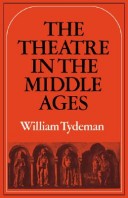Popular and scholarly works on the Elizabethan stage have long familiarised readers and playgoers with the main features of a typical Shakespearian playhouse, yet medieval stage conditions remain far less well known, despite the amount of research in this area recently. In this survey of findings and theories (some unavoidably controversial), William Tydeman covers central aspects of western European theatre from the Dark Ages to the building of the first public theatres towards the end of the sixteenth century. The book begins by examining the ancient rituals from which drama sprang, the legacy bequeathed by the Roman stage to popular entertainers of the Middle Ages, and the rôle of the histrionic impulse in Christian worship. Subsequent chapters describe in some detail the varying methods of medieval staging - indoors, processional, and al fresco - settings, costumes, and effects, the way performers were chosen and organised, how the plays were financed and how their audiences responded. Half-tone and line illustrations clarify various points of theatrical detail in the text.
- ISBN13 9780521218917
- Publish Date 15 March 1979
- Publish Status Inactive
- Out of Print 14 July 2000
- Publish Country GB
- Imprint Cambridge University Press
- Format Hardcover
- Pages 322
- Language English
